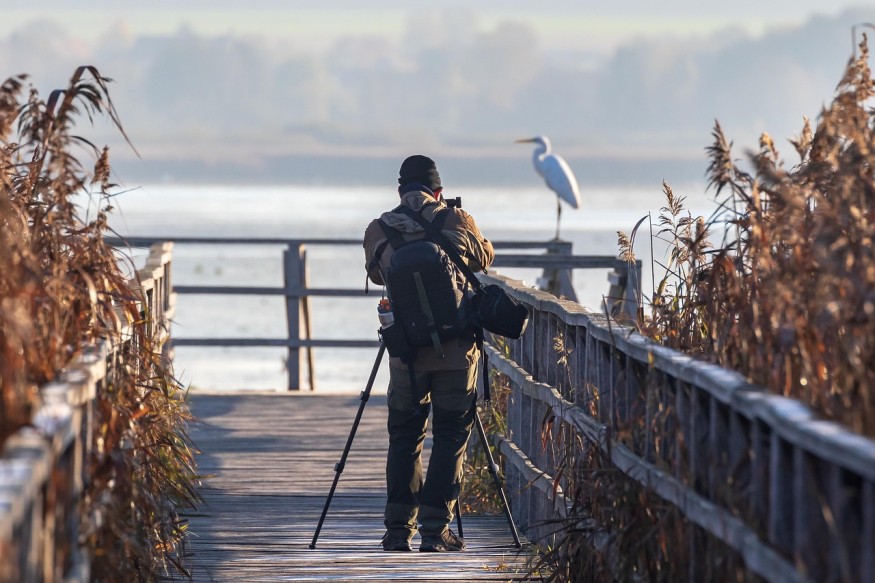
Photography is a powerful tool for storytelling. It has the power to move people in ways that no other medium can. Conservation photography is no exception.
As a form of advocacy, conservation photography connects us to situations far removed from us, creating awareness of wildlife and conservation issues.
Conservation photography is also a key driver of the demand for wildlife tourism and is critical in raising awareness of threats to our environment and its inhabitants. If you're a devout environmentalist, consider taking up conservation photography.
But what exactly is conservation photography, and how does it help save wildlife and the planet? Keep reading to find out!
What Is Conservation Photography?
Conservation photography is nature photography that aims to:
Create and expand public awareness of conservation efforts and advocate for wildlife, our environment, and the earth's ecosystem
Encourage people to take action to protect wildlife and save the planet
Further the agenda of a wide variety of conservation issues
Conservation photography can be a powerful tool to showcase the beauty of the world around us and expose the threats to the survival of wildlife.
Unlike adventure photography, which aims to create memories of our fun moments in the outdoors, conservative photography is meant to create awareness and inspire action.
Photojournalists, environment conservation organizations, and media can affect change through conservation photography.
The Ethics of Wildlife Photography
The thrill of capturing wild animals in their natural habitats is one of the greatest rewards of nature photography. But is photographing wildlife ethical?
This topic is highly debated in wildlife photography forums. Some argue that animals don't need to be treated with the same dignity as humans. A few say it's okay for animals to be disturbed for a shot. Others strongly disagree with these practices.
There are ethical and unethical ways of doing things when it comes to wildlife photography. An ethical photographer knows how to behave around wildlife and will kick things off after obtaining the proper permit and authorization to conduct wildlife photography. Even with the permit, there's a code of conduct one must adhere to before taking wildlife shots.
Here are the 5 essential rules for the ethical wildlife photographer.
Respect the law
Treat all wildlife with equal respect
Do not disturb animals in their natural habitats
Be careful with tape lures
Do not use live bait
Do not interfere with nests
Look out for signs of distress
As long as you follow these rules, you'll be taking wildlife shots ethically. Putting wildlife first is paramount in this gig. A photo is not worth the disturbance or even the animal's life.
How Conservation Photography Helps Save Wildlife
Without further ado, here's the role conservation photography plays in saving wildlife.
1. It Raises Awareness of Conservation Issues
For photography to have a big impact on conservation, it has to be more than just about sharing stunning images on social media. It must tell a compelling story of the issues surrounding wildlife and their natural habitats.
This way, wildlife photography can raise awareness for conservation issues and inspire actions to help save the animals and protect the environment.
People tend to react better to visual imagery, which allows them to experience the scene in the eyes of the photographer. By creating stunning collages of wildlife and their habitats, you can paint a picture that can help educate the public on conservation issues.
2. Helps in Discovering New Species
Cameras have become more robust and accessible, allowing scientists to take photos in areas that were previously inaccessible.
With a drone, photographers can take photos in rugged landscapes and deep trenches where it would otherwise be impossible to reach, even with the help of hiking gear. Rare species of animals hiding in these places can now be discovered without going on a "search mission."
For example, until a decade ago, not many people knew about the existence of clouded leopards. A tourist managed to photograph one of these leopards in a remote jungle in N. East India. This way, conservation photography helped discover a new species of leopards.
3. It Exposes Animal Species Close to Extinction
As scary as it may sound, some of our beloved animals, including chimpanzees, are on the brink of extinction. Studies show that dozens of animals are disappearing every day at 10,000 times the normal rate. It's estimated that by 2050, 30% of all species will be extinct.
Amid this mass extinction, conservation photography can play a critical role. It can document species on the verge of extinction and highlight the issues threatening their existence.
4. It Inspires Action
Conservation photography isn't just about taking pictures. It's more about the narrative it conveys in the images. For instance, photography can help in the conservation efforts of many NGOs and environmental conservation organizations.
We can be inspired by wildlife photographers to donate money to these groups and even inspired to make changes in our lives that will conserve their natural habitats.
Wrapping Up
Conservation photography aims to create awareness of conservation efforts and to advocate for wildlife, our environment, and the earth's ecosystem. This way, it helps educate the public on conservation issues, discovering new species, exposing species close to extinction, and inspiring the public to take action to protect the environment and save the planet.
© 2026 NatureWorldNews.com All rights reserved. Do not reproduce without permission.





